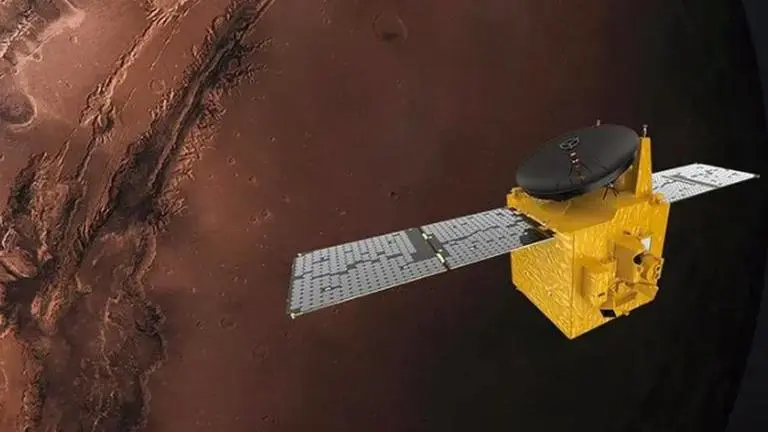Updated 26 July 2020 at 11:30 IST
NASA's Mars 2020 rover mission to return Martian meteorite fragment to its Red planet home
The piece of meteorite, originally from Mars, was discovered on the Earth in Oman in 1999 and will soon return “home" as part of NASA’s Mars 2020 rover mission.
- Science News
- 3 min read

As a part of NASA’s Mars 2020 Rover mission, a chunk of a Martian meteorite preserved at the Natural History Museum will be carried back by the US space agency’s Perseverance robot. The piece of meteorite, originally from Mars, was discovered on the Earth in Oman in 1999 and will soon return “home.” In a press release, the Natural History Museum revealed that the sample, referred to as Sayh al Uhamiyr 008 or SaU 008, was under observation of the scientists since 2000.
Head of Earth Sciences Collections at the Museum, Principal Curator of Meteorites, and member of the Mars 2020 Science Team, Prof Caroline Smith said, “Every year, we provide hundreds of meteorite specimens to scientists all over the world to study.” She added, “But this is a first for us: sending one of our samples approximately 100 million km away back home, to further our knowledge of Mars.” She further explained that the chunk had a huge role to play in being able to give a perspective and greater detail into the scientists’ quest for life elsewhere.
Smith revealed that the rock formed about 450 million years ago, got blasted off Mars by an asteroid or comet roughly 600,000-700,000 years ago, and then landed on Earth.
Advertisement
SHERLOC would deploy chunk
According to NASA, the Mars 2020 mission will focus on the evidence of ancient life on Mars by accumulating the rocks and regolith samples. In order to achieve the goal, the Mars 2020 rover Perseverance will make use of the advanced high-precision laser, camera and spectrometer instrument called SHERLOC (Scanning Habitable Environments with Raman and Luminescence for Organics and Chemicals). Such technology would help the vehicle record the finest of the details on Mars’ surface. However, scientists note that there are extreme challenges as slight temperature fluctuation, or moving sands beneath the rover, might lead to misalignments.
Explaining the role of meteorite in the mission, scientists wrote in the press release that when the rover lands on Mars’ Jezero Crater in February 2021, SHERLOC would deploy the chunk as a testing compound that would provide accuracy and precision in the mission. “When you start work for the day, you need to measure materials you know very well and that you know the composition of. This allows you to be confident that the instrument is working properly before you start working with new samples,” Smith said.
Advertisement
(Image Credit: AP)
Published By : Zaini Majeed
Published On: 26 July 2020 at 11:30 IST


